Patient lifts make transfers between a bed, wheelchair, bathroom, chair, or toilet safe and easy for caretakers. We offer patient lifts with a wide variety of tracks, motors, and mounting options. This allows us to build a system that is catered to your specific needs. We also provide a numerous selection of comfortable slings.
Every patient lift sold by Options HME is also professionally installed by Options HME employees with years of experience. We do not sub-contract our installations. We stand behind every installation with a 1 Year Labor Warranty.
Patient Lift Motors
Human Care Altair

Portable – Easily moved to another track or room, reducing cost.
Lifting Capacity – 330, 484, or 661 lbs.
Human Care Roomer S
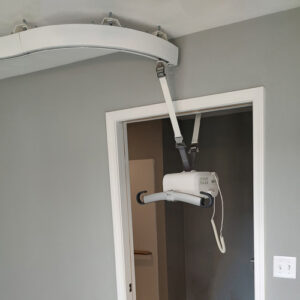
Room-to-Room Transfers – Capable of room-to-room transfers through doorways.
Portable – Easily moved to another track or room, reducing cost.
Lifting Capacity – 484 lbs.
Human Care HeliQ
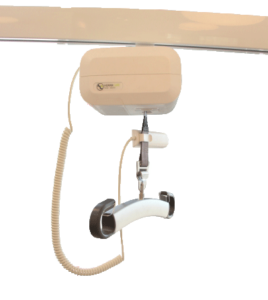
Optional Power Traverse – Fixed on rail design allows travel along the rail with the push of a button.
Lifting Capacity – 330, 484, or 661 lbs
Patient Lift Tracks & Mounting
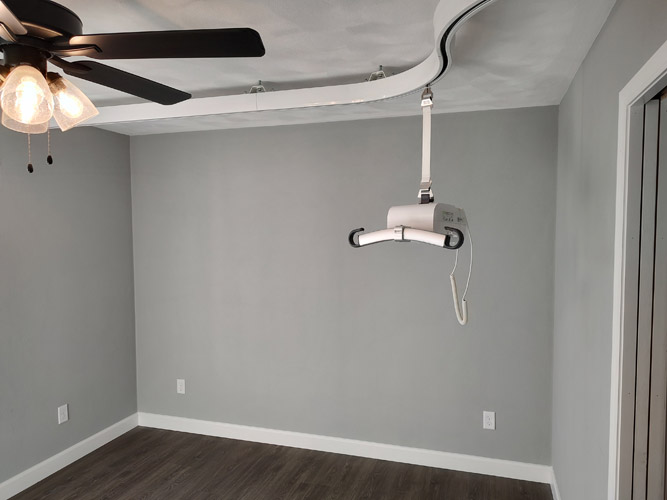
Ceiling Mounted Track
- Sleek, out of the way mounting style
- Capable of Room-to-Room transfers
- Supports turns or curved rails
- Some ceiling supports may not meet requirements or require modification
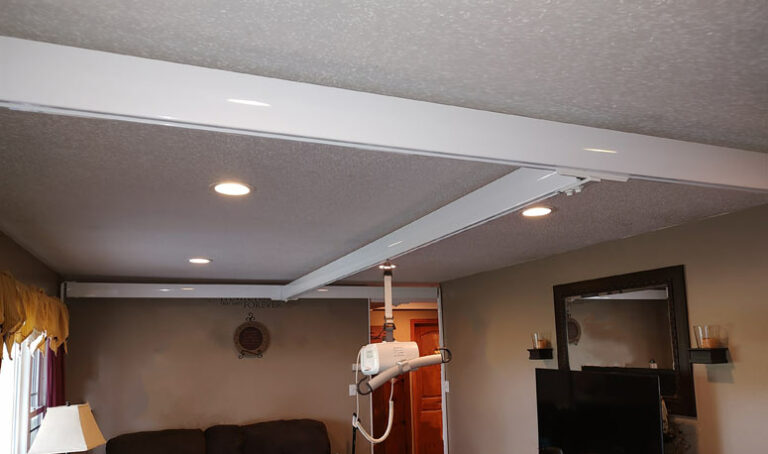
XY-Gantry Mounted Track
- Provides full room coverage
- Capable of Room-to-Room transfers
- Flush mounted center rail (does not hang below supporting rails)
- Can be stored against the wall when not in use
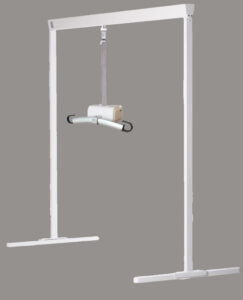
Freestanding Track
- No ceiling or wall modifications required
- Can easily be repositioned or moved to another room or home
- Does require some floor space
- Limited room coverage
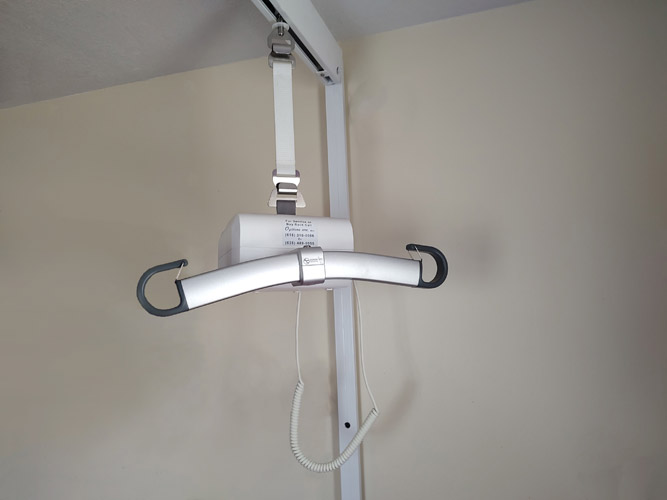
Pole Mounted Track
- Sleek, out of the way mounting style
- Capable of Room-to-Room transfers
- Poles can be painted to match wall color
- No ceiling modifications required
- May be limited by location of walls
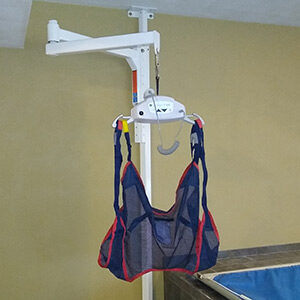
Wall Mounted Swinging Arm
- Sleek, out of the way mounting style
- Large lifting coverage area
- Pole can be painted to match wall color
- May require additional wall reinforcement
- May be limited by location of walls
The term patient lift includes many different types of lifts. Typically any lifting device that uses a sling to lift an individual may be called a patient lift. The primary function of a patient lift is to aid in movement and transferring. Movement along the track can allow access to multiple rooms without a wheelchair. Transfers can be completed between a bed, wheelchair, couch, chair, toilet, or shower and specialized slings can be used to complete tasks like bathing and using the restroom. Below, we’ll discuss the different types of patient lifts available.
Overhead Patient Lifts (Ceiling Lifts)
This style of lift may attach directly to the ceiling or use a system of poles or posts to support an overhead rail. They can be used with either a fixed motor (that stays on the overhead rail) or portable motor (that can be moved from rail to rail). These offers the largest amount of customizability. With an overhead patient lift, you have the ability to choose from simpler solutions such as a single straight rail, or complex solutions like curved overhead rails that span multiple rooms. Additionally, the motors are capable of lifting from 330 to 661 pounds, depending on the model. If you desire a system that does not attach to the ceiling, pole mounted and freestanding options are available.
Wall Mounted Patient Lifts
Wall mount patient lifts are designed for use when a ceiling lift or hoyer lift is not the solution. If a beam, obstruction, or the ceiling’s support system does not allow for a ceiling lift, we may be able to make a wall mount lift work. While these types of lifts are a little less common, they provide an excellent solution when other lifts will not fit your needs.
Hoyer Lifts
Hoyer lifts are mobile patient lifts. They typically consist of a frame with wheels and a lifting arm that supports and lifts the sling. They can be moved between rooms and are not limited by the set path of a fixed rail.
However, hoyer lifts have substantial limitations. Because the legs of the lift extend out, underneath the patient, they are limited in where they can actually complete lifts. There must be open floorspace underneath the area where the patient is being lifted. This is no issue when lifting a patient from a raised bedframe. However, they do not work well for lifting or lowering from a bathtub, shower, or chair. Since hoyer lifts are limited in their use, our focus is on overhead and wall mounted patient lifts.

